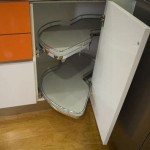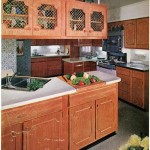Essential Aspects of Revit Kitchen Cabinet Components
In the realm of kitchen design, Revit provides an array of tools to create detailed and accurate cabinetry components. Understanding the intricacies of these components is crucial for maximizing the software's capabilities.
Base Cabinets: The foundation of any kitchen, base cabinets provide ample storage and support for countertops. Revit allows users to specify their height, width, and depth, along with the inclusion of doors, drawers, and shelves.
Wall Cabinets: Suspended above base cabinets, wall cabinets offer additional storage options and can be configured with various heights, widths, and depths. Revit enables the creation of open shelves, glazed doors, and integrated lighting elements.
Countertops: The crowning glory of any kitchen, countertops serve as a crucial work surface. Revit provides a comprehensive library of countertop materials, including laminate, granite, quartz, and solid surface, allowing designers to match the aesthetic and functional requirements of any space.
Toe Kicks: Often overlooked but essential for a polished appearance, toe kicks are the panels that cover the gap between the base cabinets and the floor. They can be customized in height and material to complement the overall cabinet design.
End Panels: Located at the ends of a cabinet run, end panels provide a clean and finished look. Revit offers a range of end panel styles, including square, chamfered, and curved, to suit different design preferences.
Crown Molding: Adding a touch of elegance, crown molding can be applied to the top of wall cabinets to create a sophisticated and cohesive look. Revit allows designers to choose from a variety of profiles to complement the overall kitchen design.
Accessories: Enhancing functionality and organization, accessories play a vital role in kitchen cabinetry. Revit provides a wide selection of accessories, including drawer organizers, pull-out shelves, and under-cabinet lighting, to cater to specific storage and task needs.
Understanding these essential aspects of Revit kitchen cabinet components empowers designers to create highly detailed and functional cabinetry systems. By harnessing the software's capabilities, designers can craft kitchens that meet the unique requirements of their clients, enhancing both aesthetics and usability.

Revit Content Kitchen

100 Revit Kitchen Families Free Content
Custom Cabinetry System For Revit Rccs Balkan Architect

Revit Content Kitchen

Revit Content Kitchen

100 Revit Kitchen Families Free Content

Revit Families And Bim Objects From Kitchen Appliances

100 Revit Kitchen Families Free Content

Revit Tutorial Kitchen Cabinet Part 2 Custom Family Template File

100 Revit Kitchen Families Free Content
Related Posts








